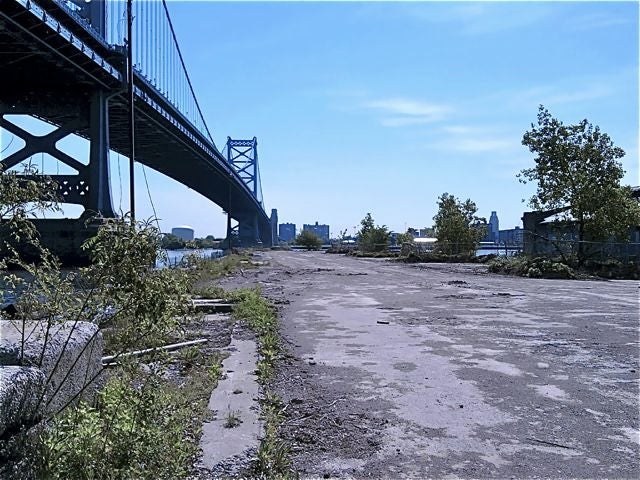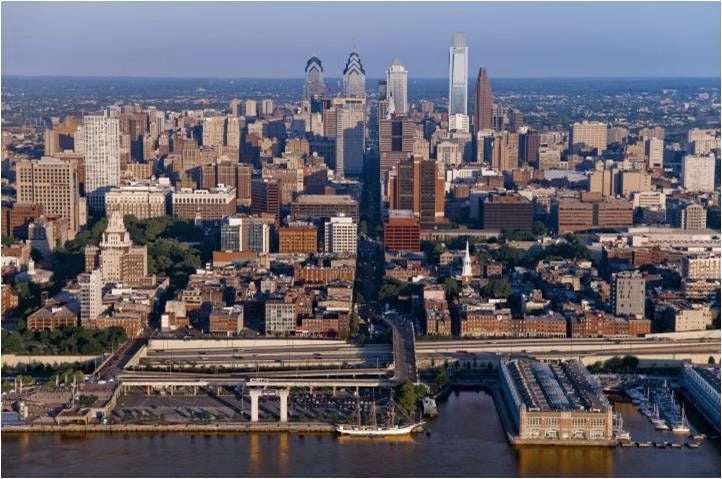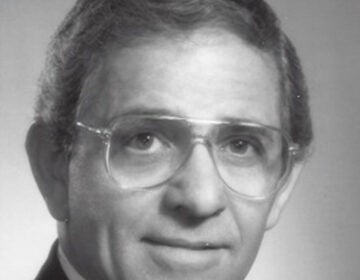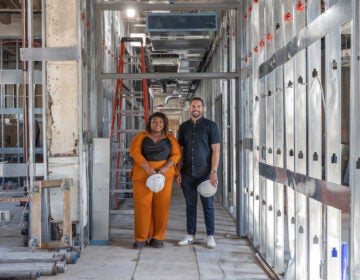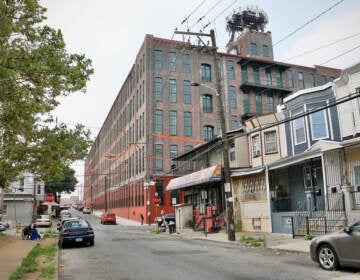Progress reports on the Central Delaware Master Plan
May 6, 2010
By JoAnn Greco
For PlanPhilly
Last night, about twenty residents of South Philadelphia got a chance to catch up with the progress of the $1 million Central Delaware Master Plan — just as their neighbors had on Tuesday night in Fishtown. Present at both meetings were Sarah Thorp, the Delaware River Waterfront Corp.’s (DRWC) master planning project manager, and Jennifer L. Hurley, planning principal with Hurley-Franks and Associates.
Together, the two meetings represented the first of three scheduled “cluster” sessions to be presented by DRWC and the Central Delaware Advocacy Group (CDAG). In between these meetings, designed to keep residents informed and to take their temperature as the Master Plan moves from analysis to development to refinement, three larger public forums will be held. The first of those is set for June 7 at Festival Pier at 6:30 p.m.
DRWC president Tom Corcoran began last evening’s proceedings at the Edward O’Malley Athletic Association by offering a status report on several early-action projects which, Thorp later pointed out, are separate from the Master Plan. Corcoran said these “early wins,” will quickly signal that “it’s a new day” on the waterfront, and include the Race St. Pier Park (scheduled for May 2011 completion), a Race Street connector, a bike trail that will be officially dedicated this fall, and, coming this summer, a park on Pier 53.
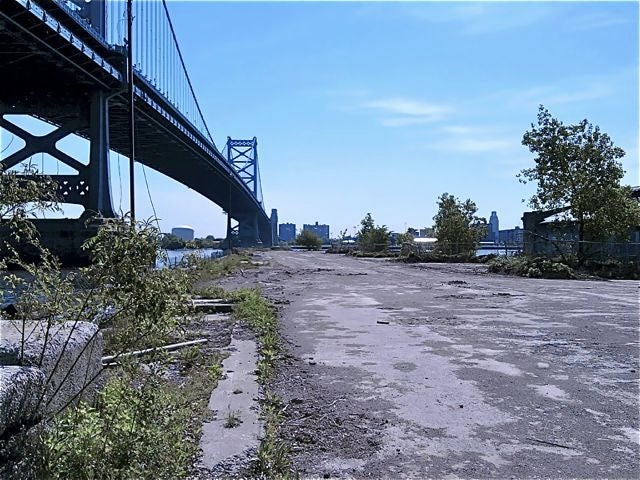
Race Street Pier
The bike trail, which will run from Pier 70 in South Philly to the Benjamin Franklin Bridge, is a Center City District project that’s already informally open and usable. It sparked a lively discussion before things got much further. “Where’d that even come from?” someone asked. “We were never consulted,” said another. Thorp apologized, saying that she “couldn’t speak to the past.” Neighbors expressed concern that as a dangerous temptation for young kids, thanks to its river access, it provides an attractive nuisance. “What about security and lighting?” someone asked.
Pennsport Civic Association board member Rene Goodwin got things back under control. “That project might have fallen between the cracks,” she said, “but that’s why it’s so important to develop a Master Plan and get community input.”
Hurley then proceeded to lead a discussion about what the community thought were the major issues surrounding the Master Plan. One recurring theme: traffic. “We need to decide what kind of character we want our place to have,” cautioned Hurley. “The Master Plan comes first, then traffic studies.” Bringing in traffic engineers too early, she suggested, would simply result in quick fixes like road-widening. Planners will issue an RFP for a traffic study, Hurley said, but only after recommended land uses have been completed.
Other issues presented by those in attendance included connectivity and access, the presence of small-scale commercial activity like cafes and an avoidance of big box stores and a mall-like atmosphere, and questions about acquiring all of the privately-held land. In response to the latter, Hurley noted that since 91 percent of the 7-mile strip is in private hands, the planners will “need to look at tax and zoning policies to encourage private owners to do what we’d like them to do.”
The next question posed to the audience concerned the physical amenities that citizens would like. Answers ranged from “to see the water!” to “anything that doesn’t resemble what Penn’s Landing is now.” The third and final question dealt with parks and recreational activities. Attendees suggested safe swimming opportunities, playgrounds and tot lots, facilities for grilling, and simple, “unprogrammed” lawn space.
An open discussion ended the evening. Points raised include the option of filling in some of the piers and the need for mixed-use development to enliven spaces in the off-season. Some wondered if any move toward encouraging Camden to clean up some of its industrial act along the other side of the river was being considered, and whether improving connections between the two ports were part of the plan. Thorp noted that her boss, Corcoran, had 25 year of experience working on that struggling city’s waterfront improvements and continued to be involved with its progress. “Tom is our connection,” she said. “It’s a huge interest of his — the idea of two cities, one waterfront.”
Presenters wrapped up by outlining all of the various public and stakeholder meetings to come between now and next January, when the final plan is scheduled to be presented to the public. They also put out a request for volunteers willing to participate in upcoming focus groups targeted to four specific uses (boating, historical, business, and recreational). Next, they went through the steps to be taken after presentation of the plan (Planning Commission adaptation, zoning legislation, design guidelines, and fundraising/public implementation), before ending on a high note with more detailed looks, via slides and site plans, of the four early-action projects.
Contact JoAnn Greco at www.joanngreco.com
Check out her new online magazine, TheCityTraveler at www.thecitytraveler.com
WHYY is your source for fact-based, in-depth journalism and information. As a nonprofit organization, we rely on financial support from readers like you. Please give today.




